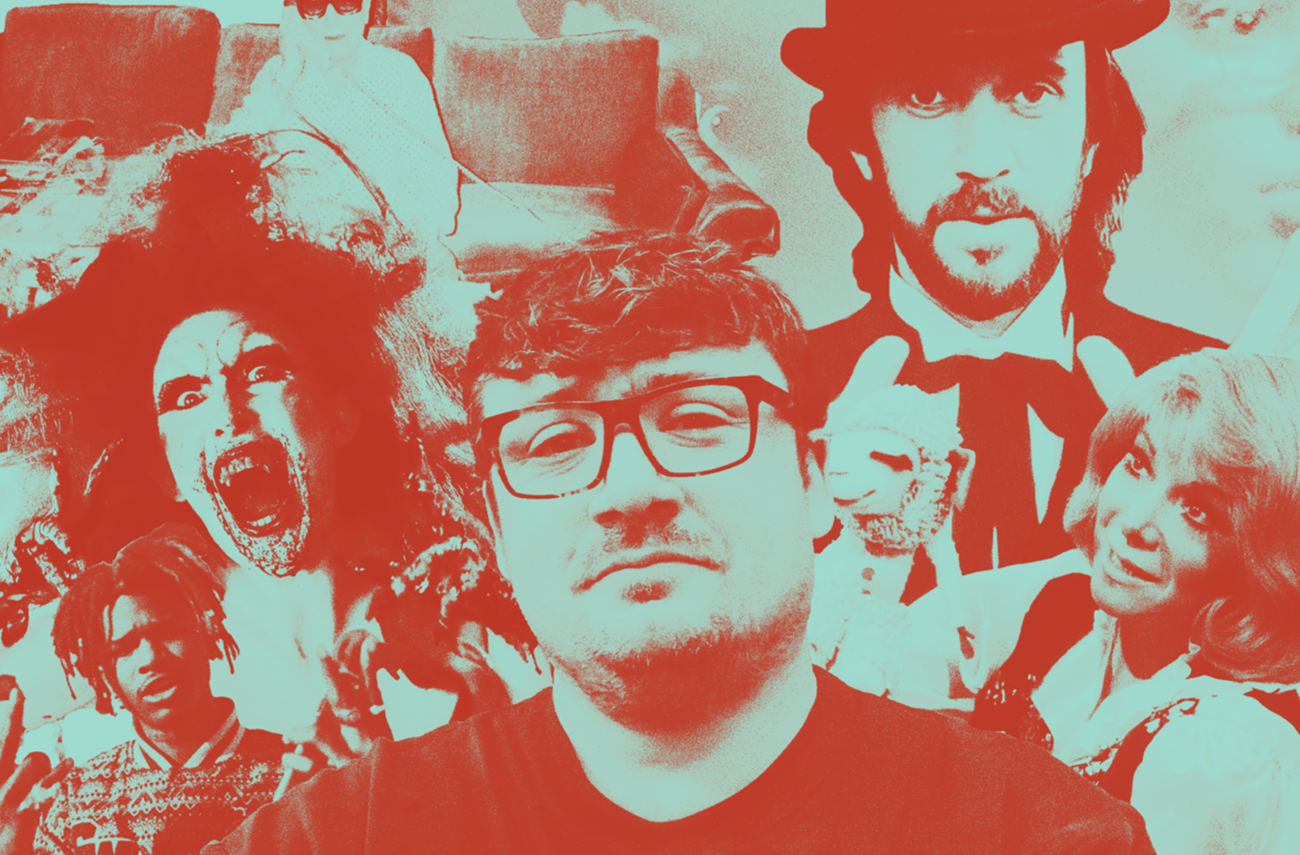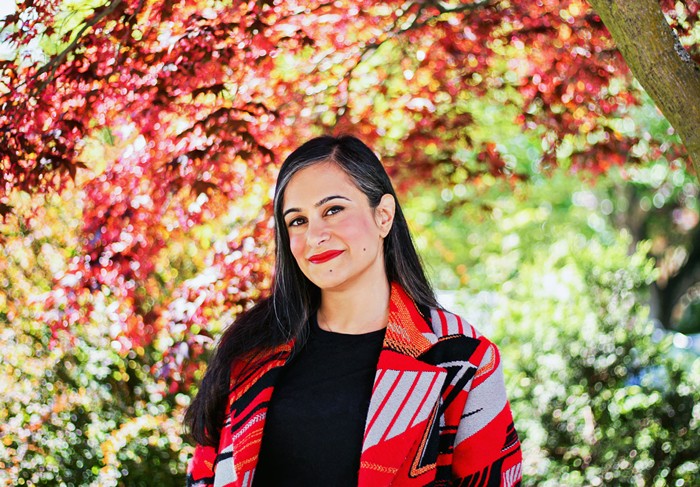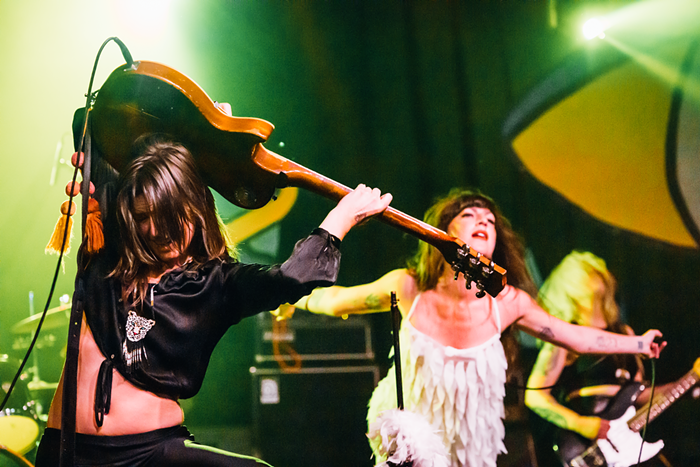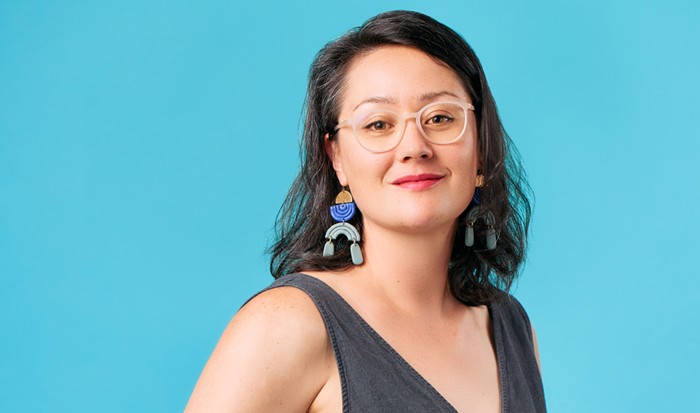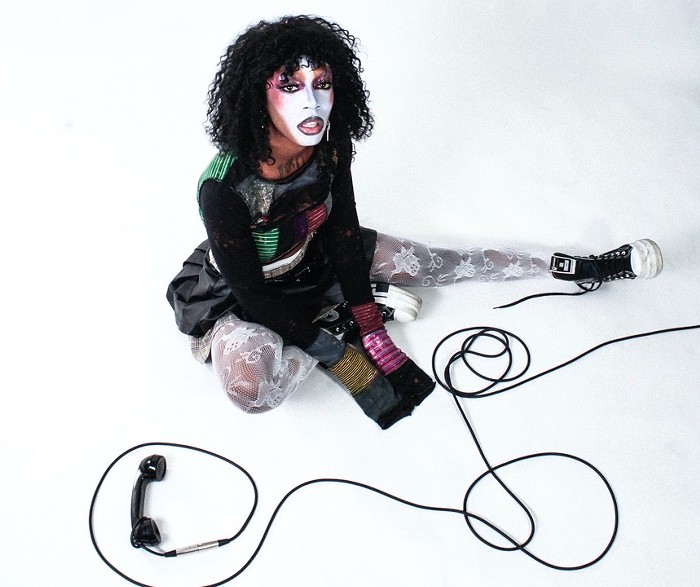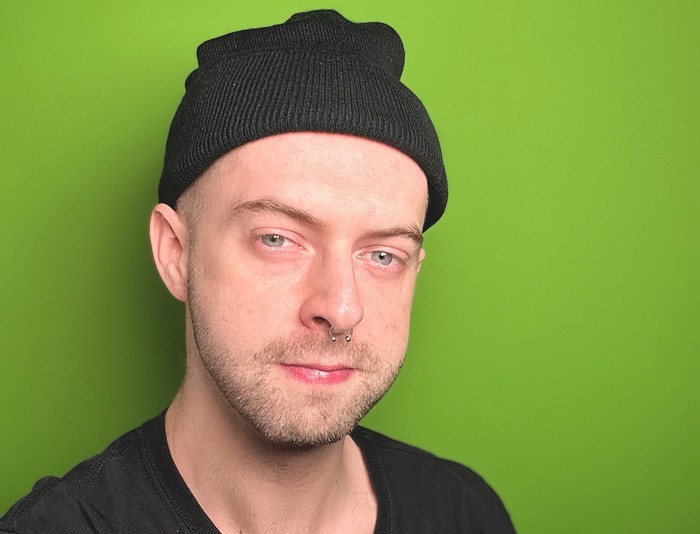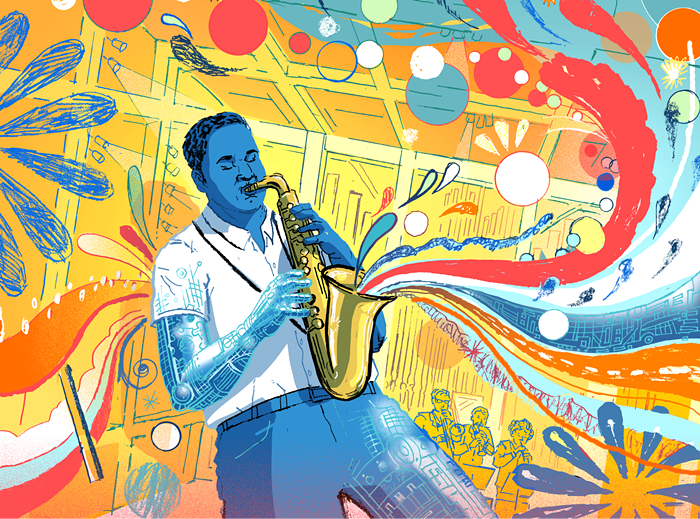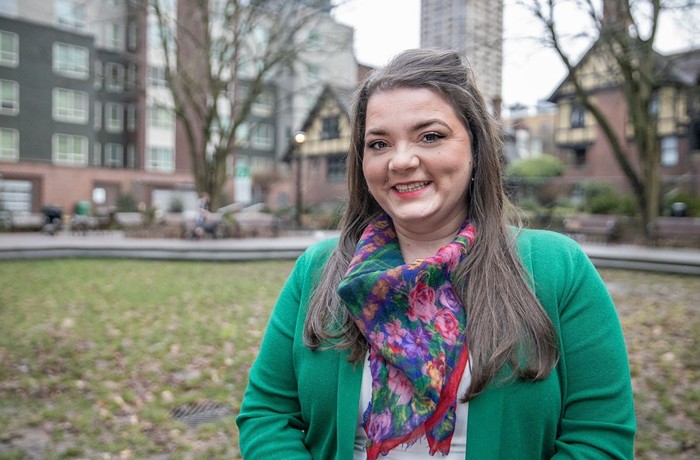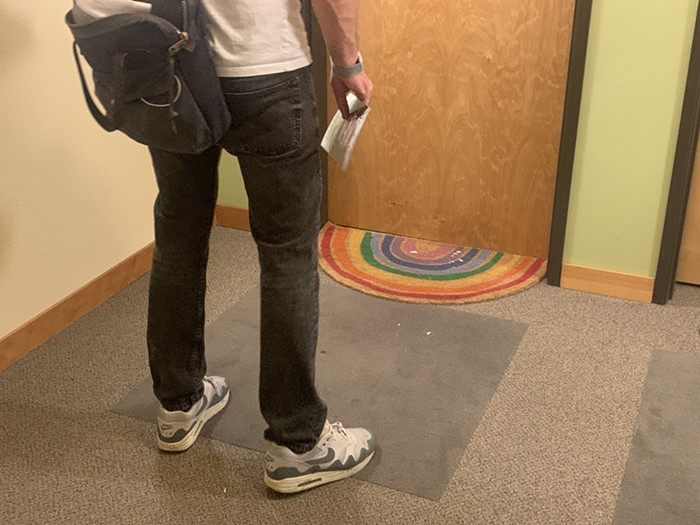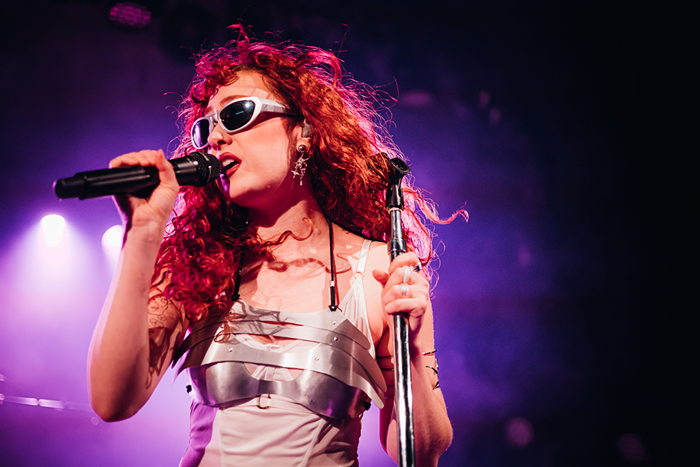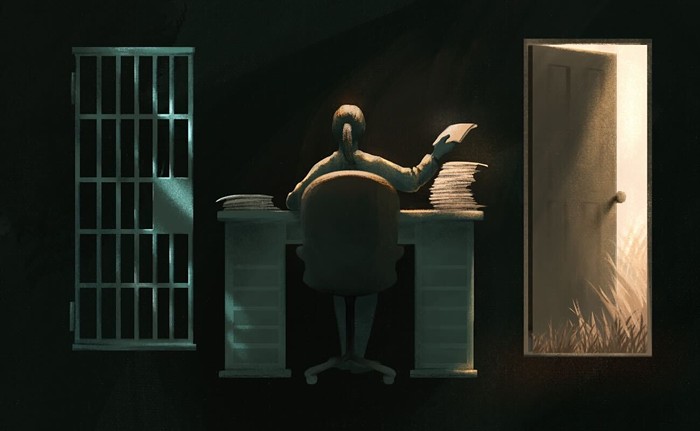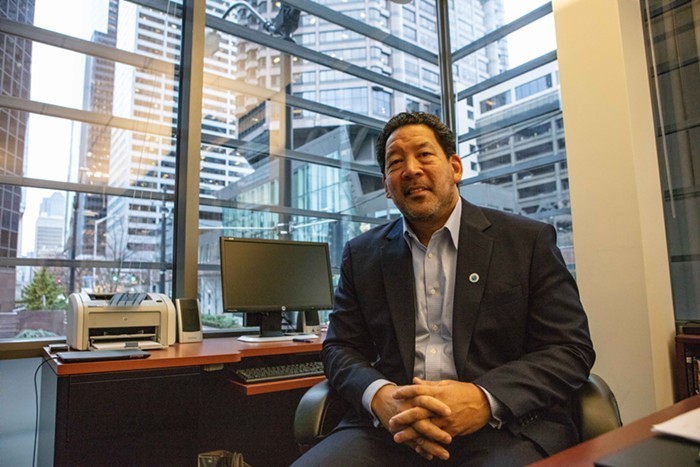What the Hell Is Make Believe Seattle?
Finally, a Film Festival for Fellow Weirdos
The Power of Making People of Color Invisible
Stephanie Syjuco Empowers the Oppressed with Just a Finger
Better, Stronger, Faster
The Seattle Repertory Jazz Orchestra Pays Tribute to the Legendary Oliver Nelson
Where to Pickup a Copy of The Stranger's Spring A+P 2024
Find it at Hundreds of Locations Around Seattle!
Queen of Our World
When Sasha taqwšəblu LaPointe Writes, the Revolution’s Coming
Blowing Minds and Melting Faces
Thunderpussy Celebrate Their Survival with a Surprising Benaroya Hall Takeover
Person of Interest: Arson Nicki
Finally, a Fashion Expert for the People
Six Films You Need to See at Make Believe Seattle
Starring Ethical Vampires, Ridiculous Puppets, and a Dude Who Pretends to Be George Lucas for Funsies
Art, Illness, and Auto Repair
Cherdonna Makes a Compassionate Comeback
Person of Interest: TeZATalks
Harbinger of Horror-Filled Hardcore Pop
It’s Important That the Bug Undulates
How Anida Yoeu Ali Uses Wiggling Worms and Glitter as Forms of Protest
Sincerely Joking
Chastity Belt Live, Laugh, and Love 10 Years On
Your Spring Arts Itinerary
24 of This Season’s Very Best Art, Books, Music, Film, Theater, and Food Events
Tessa Hulls’s Feeding Ghosts Is Instant Canon Fodder
Too Bad She’ll Never Write Another Graphic Novel
Isabel Hagen’s Comedy Strings You Along
How a Juilliard-Trained Violist Found Harmony as a Stand-Up Comedian
Person of Interest: Taha Ebrahimi
Seattle’s Coolest Street Tree Expert
What the hell even is a genre film festival? Is it just for the weirdos (a compliment!) among us who like horror and sci-fi? Isn’t every film festival technically a genre film festival, since every film fits into some kind of definable category?
To hear it from Billy Ray Brewton, the creative director of Seattle’s genre film festival Make Believe Seattle, genre film festivals leave room for unpredictability or surprises.
After the demise of the North Bend Film Festival (RIP) last year, Washington has needed an event that is bursting with weirdness at every turn. Brewton said Make Believe is here to not only fill this gap but also to stand out from other such festivals that are already running.
“We’re not a traditional genre festival intentionally,” Brewton said. “The bigger genre festivals like Fantastic Fest or Beyond Fest or Fantasia or Sitges—we’re very different from festivals like those. They really focus hardcore on horror, sci-fi, fantasy, and we go so far outside of that. Our definition of genre, it does meet all of those criteria, but it’s also just anything that deals in a heightened imagination.”
This year, that includes stories about ethical teenage vampires, killer deer, and a man pretending to be George Lucas. The festival will be holding showings at the Northwest Film Forum like last year, but they’ll also be at the Grand Illusion and the Erickson Theatre for the first time. For Brewton, who moved to Seattle years ago but now lives in Los Angeles, this is the place to be.
“Seattle and the Pacific Northwest in general is probably the weirdest, creepiest, strangest area of the country. This is the perfect place to have this festival.”
With Make Believe, Brewton is also trying to be as inclusive as possible in a genre space he sees as still having a lot of work to do when it comes to putting on events of this size and scale.
“Part of the reason that this film festival exists is because I’ve been going to genre festivals for years and years and years and I just never found them to be particularly inclusive,” he said. “I don’t think it was an intentional thing on most of their parts, I just think it’s the nature of the beast. For the longest time, genre festivals catered to cis white men, and they still do to a large degree. So if you went as a person of color, if you went as a queer person, if you went as a woman, you didn’t always feel seen.”
While Brewton said making sure everyone is welcome is part of the focus, there also is a specific commitment to expanding programming, as they’ve done with the Native American Showcase. This year, that involved bringing in programmer and filmmaker Colleen Thurston to put it together.
“Indigenous genre films? That’s my jam,” Thurston said. “It was really exciting for me to platform some of these films and bring them to an audience that might not otherwise get to see them.”
The Native American Showcase’s main feature is the experimental film Gush, in which director Fox Maxy breaks down and rebuilds traditional filmmaking styles by weaving together personal archival footage shot over a decade.
“It premiered at Sundance, and Fox Maxy is really kind of a radical filmmaker,” Thurston said. “She’s really working in this unabashedly direct and confrontational, yet playful, style that feels wholly original. Combining iPhone footage and this collage-style narrative-building is really unique.”
Elsewhere, there is the short The Handsome Man, which stars the great Lily Gladstone, a former Seattleite who has been in a run of fantastic films including Certain Women, Killers of the Flower Moon, and the upcoming Fancy Dance, which screened at last year’s Seattle Queer Film Festival.
“[The Handsome Man] was submitted and made by two local Washington filmmakers,” Thurston said. “That being local to the region is really exciting. It’s also Lily in a role that does feel a little bit different.”
To hear it from Misty Shipman, who wrote and directed the film with her sister Hope, the selection of her film and the Native American Showcase itself is an exciting development in the local film festival scene.
“For a brand-new festival, it’s a very respectable thing that they’re doing,” she says. “Making sure that Native voices are heard and included from the jump.”
Shot on the Kalispel Tribe Reservation located north of Spokane, the short was inspired by Gladstone herself. It was when Shipman saw Gladstone’s performance in the 2013 feature Winter in the Blood that she decided she wanted to become a filmmaker. Years later, it was brought full circle as they worked together post-KOTFM.
“Lily was the very first person that I thought of,” Shipman said. “She emailed me back and she said, ‘I would love to do your film, I resonate deeply with this story, for better and worse. I’ll be in Osage Country for the next six months. When I get back, are you still wanting to do it?’ And I said yes.”
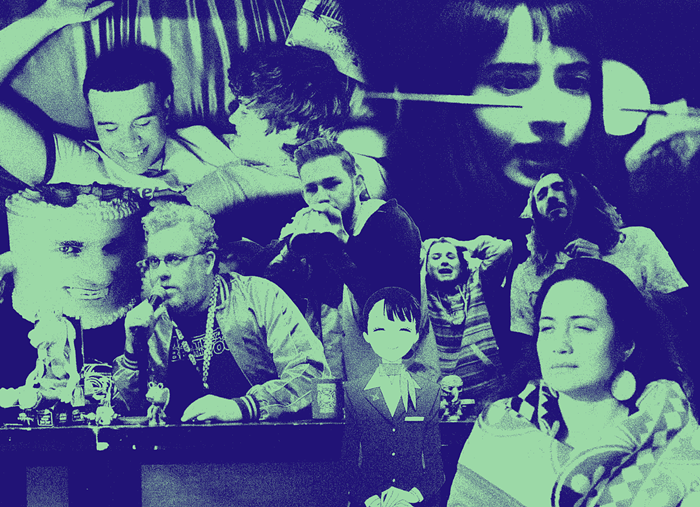
The Handsome Man isn’t the only film with local ties. The micro-budget horror A Most Atrocious Thing, one of the festival’s two world premieres, was made by a bunch of young Chapman University students in Colorado, and the opening credits were shot in North Bend and Gig Harbor. This is because the central car they’d used throughout production, which belonged to Washington-born filmmaker Will Ammann, broke down en route back home.
“It died on the road so we couldn’t bring it down to Colorado or LA for any more reshoots,” Ammann said. “Anything else we needed the car for was done in the Pacific Northwest.”
Unexpected car breakdowns aside, the film also had to shoot around the pandemic and their respective work schedules. Shot over approximately 50 days spread out over three years, the film originally was built as a surreal horror movie before taking on a more comedic bent. Ben Oliphint, who co-wrote and co-stars in the film alongside Ammann, said this was necessary.
“It was a completely different movie [in July 2020],” Oliphint said. “We were all being very democratic about it and not having it be anyone’s film. None of us had directed a feature, none of us knew. That meant there were a lot of cooks in the kitchen so we couldn’t actually figure that one out. So we completely pivoted after two weeks of toiling away.”
The pivot was to fully dive into the silliness and have everyone play versions of themselves on a trip gone very awry. That the film is now premiering in Seattle, where Ammann grew up making shorts and participated in the National Film Festival for Talented Youth, is a fitting homecoming moment.
“It’s very exciting for me,” Ammann said. “I can get all my friends and family to come to this.
As for how he thinks about the future of filmmaking in the state, Ammann sees a lot of promise.
“I really do believe this with Seattle, I think it’s trending in the right direction. I think with the new incentives that have come out that have been gifted for more independent productions, I think that’s really huge. I really feel like the people in the Pacific Northwest are just as driven, just as talented as anyone I would meet in California or New York. There’s a drive. With Make Believe getting genre films out there, I feel like that’s just gonna make it bigger.
“We’re spoiled. It’s a beautiful area. There is so much you can do. If you want to get desert, just cross the Cascades. Or if you want water, there are so many options close by.”
When it comes to the status of Make Believe, Brewton said they broke even in their first year. While this was encouraging, local support is still needed to ensure the festival can last.
“We’re just still building the house,” Brewton said. “Whatever your film festival of choice is in Seattle, if you want these amazing things to stay around, you have to support them. I wish it was a situation where that wasn’t necessary. I wish we lived in a country that supported arts programs as well as a lot of other countries do. We don’t. That’s just not the current reality. So if you want these organizations to stay around, you have to support them.”
Make Believe Seattle runs March 21–26 with screenings at Northwest Film Forum, the Erickson Theatre, and the Grand Illusion. Tickets are available at makebelieveseattle.com. Read our film recommendations here!
